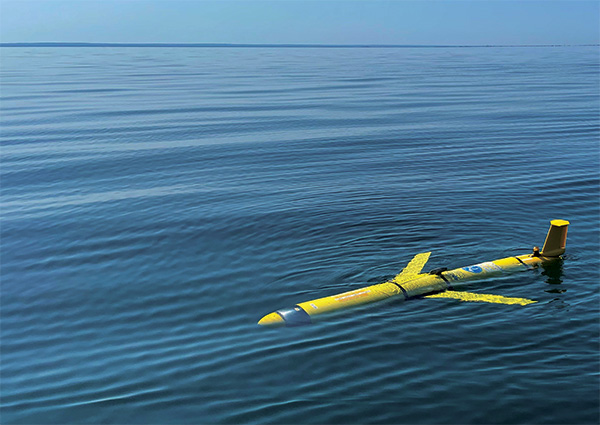
Overview
The Great Lakes are essential for drinking water, recreation, transportation, hydroelectric power, and irrigation. The system provides more than 40 million people with drinking water and generates more than 1.5 million jobs. The lakes are also large enough to help cool nearby communities in summer and warm them in winter. In addition, the Great Lakes provide an ecosystem that is home to more than 3,500 plants and animals, some of which are unique to these environments. Recent declines in water quality, especially those nearshore, have amplified the need to under-stand the connectivity between nearshore and offshore areas.
The Challenge
Observations between dynamic nearshore and offshore transitions pose a challenge for traditional observing systems. Some observa-tions have been made using traditional methods, such as ship-based and buoy-based observations. Despite the success of gathering data using traditional methods, there are challenges, including the high cost of ship-based surveys and the infrequent sampling by satellite imagery, both of which are affected by weather conditions.
The Solution
Using the Teledyne Slocum glider, scientists were able to overcome these challenges. In contrast to shipboard observations, the Teledyne Slocum Glider is inexpensive to operate and can continue to collect data while being deployed for weeks at a time. The Slocum Gliders can continuously profile the water column while heading to the next waypoint, collecting high temporal and spatial resolution data using a suite of onboard sensors specific to the mission. Glider observations have a distinct advantage. Because of the glider’s profile in the water column, they can collect data regarding gradients of temperature and the concentration of chlorophyll along with other water quality parameters throughout the survey area. During this survey, the Teledyne Slocum glider completed 3,000 vertical profiles over 1,000 km or 600 miles between early and late summer deploy-ments. Data collected by the glider showed a seasonal difference in from early to late summer in an area of high thermal and chlorophyll gradients. Glider opera-tions were able to expand observations used for water quality monitoring and modeling dramatically.
